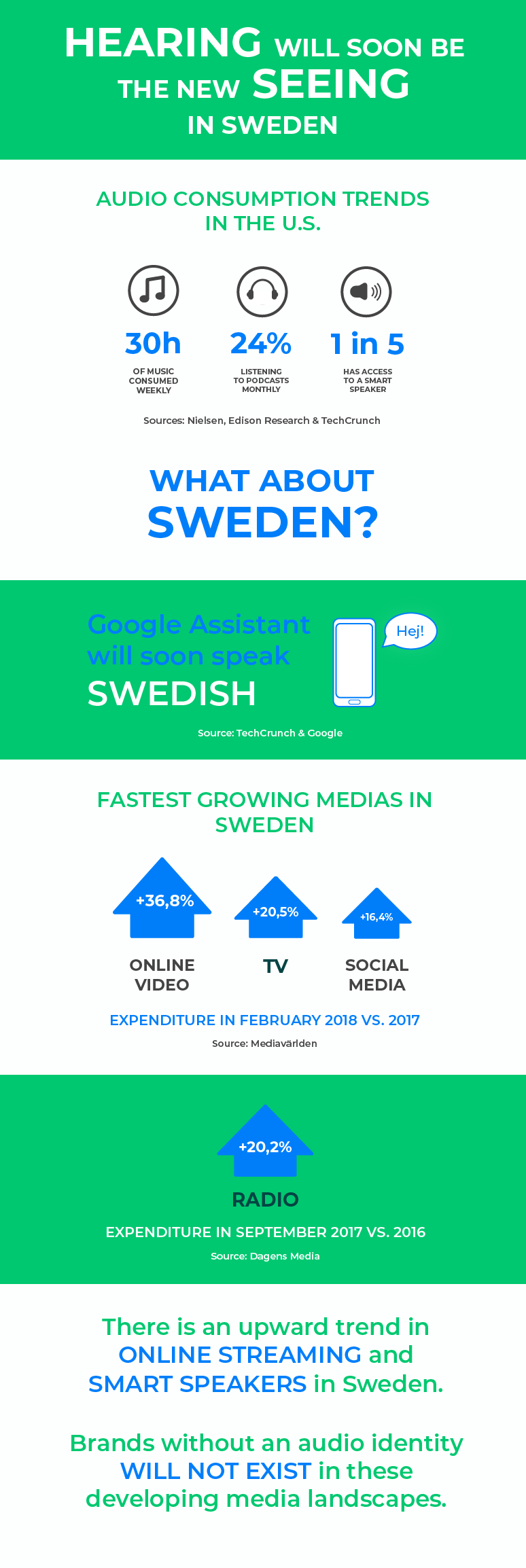Hearing will soon be the new seeing in Sweden
 The visual brand space is becoming increasingly crowded at the moment. Consumers are currently exposed to thousands of visual advertisements daily. As a result, brands are having a tougher time at transmitting their stories and experiences to their already overloaded audiences.
The visual brand space is becoming increasingly crowded at the moment. Consumers are currently exposed to thousands of visual advertisements daily. As a result, brands are having a tougher time at transmitting their stories and experiences to their already overloaded audiences.
As online streaming has gone mainstream, audio consumption has skyrocketed along with it. People now spend over 30 hours per week listening to music and podcasts are on the rise as well, judging by the trend in the United States. Furthermore, audio is now being consumed not only by listening, but speaking as voice search and digital assistants are becoming increasingly common. In fact, one in five adults in the U.S. now has a smart speaker.
This year, Google’s flagship search app, Google Assistant, is adding dozens of new languages to it’s vocabulary, including Swedish. Advertisers and brands in Sweden should take advantage of this as they will be able to communicate with their audiences in their native language. As smart speakers continue establishing themselves in Swedish households, brands will have access to more personal listening spaces.
Online media has already taken off in the Swedish media market. Medievärlden reported that in February 2018 there was a rise in the amount of money spent producing online videos, which resulted in a whopping 36,8 percent growth from the year before. However, the traditional media outlets of Sweden have managed to reinvent themselves by utilizing online streaming to stay relevant. TV expenditure increased by 20,5 percent and a few months earlier, radio had gained expenditure by 20,2 percent.
The upward trend with online media and smart speakers is putting brands face-to-face with the reality that they need to pay attention to what they sound like. Those who don’t have an audio identity will not exist in these developing media landscapes.





